Meretseger: Theban Cobra Goddess Who Presided Over The Valley of The Kings
A. Sutherland - AncientPages.com - In Egyptian mythology, Meretseger presided over the Theban necropolis located on the west bank of the Nile, especially the Valley of the Kings and the Valley of the Queens.
Stela with priest Neferhor praying to Meretseger, Luxor, Deir el-Medina, New Kingdom, Dynasty 20, reign of Ramesses III, c. 1182-1151 BC, limestone - Oriental Institute Museum, University of ChicagoImage credit: Daderot - CC0 1.0
Meretseger was associated with one particular landmark among the desert hills, and it was the pyramid-shaped, natural mountain peak (420 m) in the Theban Hills, known as el Qurn ("The Horn").
From there, she looked over the region. She was sometimes called Dehenet-Imentet ('the peak of the West') after her dwelling place, clearly recognizable on the horizon. Interestingly, her mountain peak was believed to be one of the entrances to the underworld. However, her most popular name was Metseger ('she who loves silence'), and this name perfectly fitted her because she adored the desolate, quiet, and lonely place belonging to the deceased.
In the mythology of ancient Egypt, three important cobra goddesses ruled over three environments. One of them was Wadjet, who ruled over the marshes of Lower Egypt.
The second was the goddess Renenutet ("snake who nourishes"), a popular and benevolent deity of cornfields. The third one was Meretseger, who presided over a desert hill, but she was only sometimes compassionate.
 Meretseger on an ostracon. Egyptian Museum, Cairo. Image credit: Djehouty - CC BY-SA 4.0
Meretseger on an ostracon. Egyptian Museum, Cairo. Image credit: Djehouty - CC BY-SA 4.0
The necropolis' artisans and other workers who worked in the Valley of the Kings were aware of the goddess's constant presence. As they knew she was watching their hard work, they frequently "needed to appease Meretseger before they could work safely in her domain. One describes Meretseger as striking like a lion when angry but coming like a sweet breeze when she is appeased. Snakes were said to sleep below the earth like the dead every night and come alive again by day." 1.
In the village, several unearthed stelae were dedicated to Meretseger, and some made emotional and desperate requests for the goddess's forgiveness.
The artisans from the Valley of the Kings revered several deities such as Ptah, Osiris, Hathor, and kings and queens. However, Meretseger was always remembered by her worshipers. The snake, a source of danger and evil, held people in constant fear, and this goddess could avert the threat from these deadly creatures or cure them if necessary.
Being harsh with people, Meretseger was believed to strike those guilty of crimes or other evil deeds (like stealing something from the royal graves) with loss of sight or punished them with the help of dangerous bites and poisonous stings.
 Meretseger/Al-Qurn - The natural pyramid over the valley of the kings, Luxor, West Bank. Image credit: Steve F-E-Cameron (Merlin-UK) - CC BY-SA 3.0
Meretseger/Al-Qurn - The natural pyramid over the valley of the kings, Luxor, West Bank. Image credit: Steve F-E-Cameron (Merlin-UK) - CC BY-SA 3.0
Ancient Egyptians believed they could save themselves from all evil creatures by venerating the scorpion goddess. Ancient Egyptian goddess Serket had power over snakes and scorpions and their poisonous and deadly bites. Thus, she could heal from fatal bites of snakes and scorpions and, another time, punish evildoers.
Several stelae were discovered in Deir el-Medina, the home to artisans and craftsmen, and these artworks attest to the goddess's forgiveness and the recovery of workers. Meretseger was, first of all, worshiped by the artisans and other workers who built and decorated the tombs of the Egyptian royals in the Valley of the Kings during the 18th to 20th Dynasties of the New Kingdom of Egypt (ca. 1550–1080 BC).
The ancient Egyptians believed that "snake-headed demons and fire-spitting snakes punish evil souls.
The visions of the underworld painted on the walls of the royal tombs were all associated with snakes. Each of the twelve underworld gates has a snake guardian, and the solar barque and the corpse of Osiris were protected by the coils of the mehen snake, a kind of counter - Apophis.
Stele Nakhtimen from Deir el-Medina, praying Meretseger the snake-goddess. Credit: Marie-Lan Nguyen - CC-BY 2.5
Time itself was depicted as an endless snake that swallows up the hours. One of these images, the "Ouroboros" or "tail-in-mouth" serpent, passed into other cultures as a symbol of infinity." 1
Usually, Meretseger was depicted as a coiled serpent, a cobra with a woman's head, a snake-headed woman, or with attributes like a modius with uraeus, a disk with horns. Both serpents and scorpions were among creatures that inhabited remote desert-like places, and as such, they were, no doubt, perfectly fitting symbols of this deity.
Meretseger's cult is first dated to the New Kingdom (1550–1070 BC) but not later when the Theban necropolis ceased to be used for royal tombs.
Written by – A. Sutherland - AncientPages.com Senior Staff Writer
Updated on February 20, 2024
Copyright © AncientPages.com All rights reserved. This material may not be published, broadcast, rewritten or redistributed in whole or part without the express written permission of AncientPages.com
Expand for referencesReferences:
Pinch G., Handbook of Egyptian Mythology
Hart, G. A Dictionary of Egyptian Gods and Goddesses
More From Ancient Pages
-
 Jack o’ Legs – The Kind Hertfordshire Giant Who Robbed The Rich And Gave To The Poor
Featured Stories | Sep 20, 2021
Jack o’ Legs – The Kind Hertfordshire Giant Who Robbed The Rich And Gave To The Poor
Featured Stories | Sep 20, 2021 -
 Mystery Of The Lost Biblical City Of Ai – Where Was It Located?
Ancient Mysteries | Apr 23, 2017
Mystery Of The Lost Biblical City Of Ai – Where Was It Located?
Ancient Mysteries | Apr 23, 2017 -
 Giants Did Exist And Were A Part Of Earth’s Ancient History
Ancient Mysteries | Apr 29, 2014
Giants Did Exist And Were A Part Of Earth’s Ancient History
Ancient Mysteries | Apr 29, 2014 -
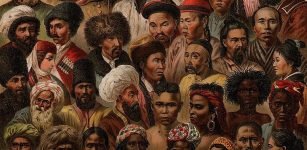 Ancient Trans-Atlantic Emigration Theory – Not Supported By Genetic Data, Researcher Says
Archaeology | Jan 18, 2016
Ancient Trans-Atlantic Emigration Theory – Not Supported By Genetic Data, Researcher Says
Archaeology | Jan 18, 2016 -
 Unexpected Discovery Of Two Viking Swords In Upright Position In Sweden
Archaeology | Oct 27, 2022
Unexpected Discovery Of Two Viking Swords In Upright Position In Sweden
Archaeology | Oct 27, 2022 -
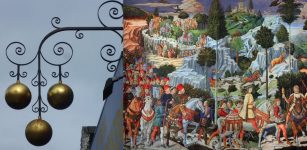 Why Is The Three Golden Balls Symbol For A Pawn Shop Connected To The Medici Family?
Ancient History Facts | Feb 12, 2019
Why Is The Three Golden Balls Symbol For A Pawn Shop Connected To The Medici Family?
Ancient History Facts | Feb 12, 2019 -
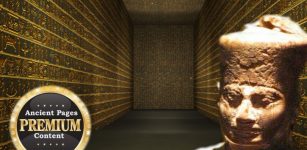 Incredible Treasure Discovered In The Secret Chamber Of The Great Pyramid 1,200 Years Ago May Offer Proof Of Long-Lost Scientific Knowledge
Ancient Mysteries | Dec 31, 2018
Incredible Treasure Discovered In The Secret Chamber Of The Great Pyramid 1,200 Years Ago May Offer Proof Of Long-Lost Scientific Knowledge
Ancient Mysteries | Dec 31, 2018 -
 Unique 3,000-Year-Old Logboat Found In River Tay – On Display In Perth, Scotland Again
Archaeology | Oct 30, 2023
Unique 3,000-Year-Old Logboat Found In River Tay – On Display In Perth, Scotland Again
Archaeology | Oct 30, 2023 -
 On This Day In History: Battle Of Rain Was Fought On April 15, 1632, During The Thirty Years’ War
News | Apr 15, 2016
On This Day In History: Battle Of Rain Was Fought On April 15, 1632, During The Thirty Years’ War
News | Apr 15, 2016 -
 Strange Tale How The Liberty Cap Mushroom Got Its Name Starts In Ancient Rome
Featured Stories | Sep 3, 2023
Strange Tale How The Liberty Cap Mushroom Got Its Name Starts In Ancient Rome
Featured Stories | Sep 3, 2023 -
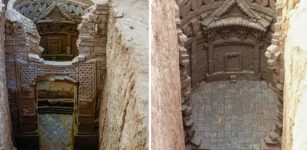 Incredible 700-Year-Old Tombs With Beautiful Decorations And Carved Bricks Found In Shandong, China
Archaeology | May 22, 2023
Incredible 700-Year-Old Tombs With Beautiful Decorations And Carved Bricks Found In Shandong, China
Archaeology | May 22, 2023 -
 Lost Medieval Kingdom Found In West Sussex, UK
Archaeology | Jul 1, 2024
Lost Medieval Kingdom Found In West Sussex, UK
Archaeology | Jul 1, 2024 -
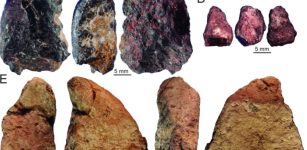 Homo Sapiens In China And What Happened When They Encountered Denisovans Or Neanderthals
Archaeology | Mar 4, 2022
Homo Sapiens In China And What Happened When They Encountered Denisovans Or Neanderthals
Archaeology | Mar 4, 2022 -
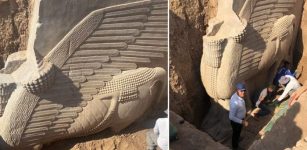 Impressive Huge Ancient Lamassu Statue Unearthed In Nineveh, Iraq
Archaeology | Oct 28, 2023
Impressive Huge Ancient Lamassu Statue Unearthed In Nineveh, Iraq
Archaeology | Oct 28, 2023 -
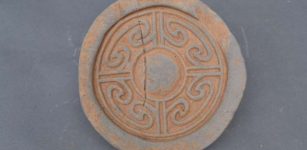 Discovered Inscription On Ancient Stone Vessel Reveals Location Of Legendary Tomb Of Chinese Emperor
Archaeology | Jan 11, 2021
Discovered Inscription On Ancient Stone Vessel Reveals Location Of Legendary Tomb Of Chinese Emperor
Archaeology | Jan 11, 2021 -
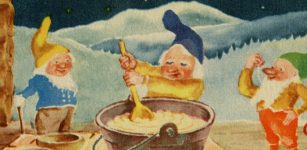 How Norwegians Expressed Resistance Against Nazi Occupation Using Christmas Cards
Featured Stories | Dec 21, 2023
How Norwegians Expressed Resistance Against Nazi Occupation Using Christmas Cards
Featured Stories | Dec 21, 2023 -
 Prehistoric Heavy Machinery Of The Ancient Times Or A Piece Of Jewelry?
Ancient Technology | Sep 12, 2018
Prehistoric Heavy Machinery Of The Ancient Times Or A Piece Of Jewelry?
Ancient Technology | Sep 12, 2018 -
 Ivar The Boneless: Famous Viking And Son Of Ragnar Lodbrok
Featured Stories | Jun 6, 2016
Ivar The Boneless: Famous Viking And Son Of Ragnar Lodbrok
Featured Stories | Jun 6, 2016 -
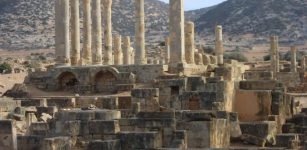 University Of Warsaw Archaeologists Return To Study Large Ancient City Of Ptolemais
Archaeology | Sep 8, 2023
University Of Warsaw Archaeologists Return To Study Large Ancient City Of Ptolemais
Archaeology | Sep 8, 2023 -
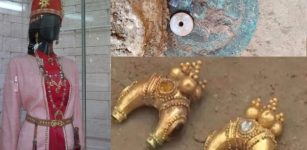 Magnificent Ancient Treasures Of The Mysterious Kangju Kingdom Found By Archaeologists
Archaeology | Jun 11, 2024
Magnificent Ancient Treasures Of The Mysterious Kangju Kingdom Found By Archaeologists
Archaeology | Jun 11, 2024



